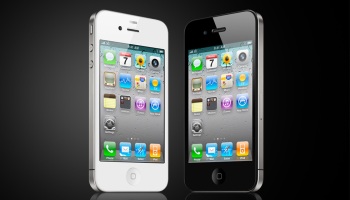Analyst: Google, Apple Tied In Mobile Ad Market

Apple’s iAd advertising platform may have already taken over 21 percent of the mobile ad market, according to IDC
Apple iAd was only launched in July but at least one industry analyst believes the platform has been so successful that it equals Google’s mobile ad revenue share.
IDC analyst Karsten Weide said that Apple iAd comprises 21 percent of mobile ad sales, tying Google’s own 21 percent of revenues for 2010 after dropping the combined Google-AdMob share from 27 percent of the mobile ad sales pie.
Early success
JumpTap, Millenial Media and Yahoo round out the IDC top 5 list, with 13 percent, 11 percent and 9 percent of mobile ad revenues, respectively. Microsoft is next, at 7 percent, in a market IDC said should total $500 million (£315m) for the year.
 When Weide made his proclamation to BusinessWeek Bloomberg last month, he sent ripples throughout the industry by those who believed it was too soon for Apple to see so much success.
When Weide made his proclamation to BusinessWeek Bloomberg last month, he sent ripples throughout the industry by those who believed it was too soon for Apple to see so much success.
Even so, Weide told eWEEK he calculated his numbers by taking Apple’s June statement that iAd had secured $60m in contract commitments and added the existing revenues of Quattro Wireless, the mobile ad startup Apple acquired to build iAd, for which Apple charges a hefty $1m entrance fee.
“Jobs personally called marketers himself,” Weide said, noting that this gesture carried weight with advertisers such as AT&T, Unilever, Best Buy, Citi Target and The Walt Disney Studios. “Given that, you can see how [Apple] would arrive at this kind of revenue.”
Moreover, Weide’s stats iAd (52 percent) leads AdMob (36 percent) with developers noting a preference for iAd’s richer ad units and higher click-through rates.
Still, the numbers are very fluid. Weide’s tabulation came before high-profile advertisers such as Adidas and Chanel backed out because of Apple chief executive Steve Jobs’ typically stringent rules for ads that run on applications on his iPhone and iPad devices.
Scepticism
And Weide has his doubters in the industry. Search Engine Land’s Greg Sterling, who watches the mobile ad market closely, was sceptical about the IDC numbers because Google commands the lion’s share of mobile ad searches thanks to a success AdSense for Mobile program.
Also, Google’s acquisition of AdMob, a major independent player prior to joining Google, improves Google’s position in the market.
After speaking with sources, Sterling said combined mobile ad revenue shares of Google, Apple, Yahoo and Millennial Media totalled 60 percent.
All else being equal, that’s 15 percent share per company, but one is hard pressed to argue how Google and AdMob together don’t have more than the other providers.
Sterling isn’t the only one to dispute the IDC numbers. Jumptap chief marketing officer Paran Johar said iAd may be capturing 21 percent of the dollars today, but not the impressions or the opportunity.
“They are a very focused on the super premium brand advertisers willing to spend $1m minimum while controlling the brand’s creative,” Johar said.
Google ‘will crush Apple’
Moreover, he said Apple shut down iAd to mobile Internet publishers, causing a surge in publishers wanting to work with a partner that is platform agnostic and open. Jumptap is reaping the benefits of this shift, he added.
While Weide is bullish on iAd in the near term, he also told eWEEK that Google will “in years to come crush Apple” because its Android platform will outsell the iPhone.
Indeed, Apple sells a handful of versions of the same iPhone. As good as that handset is, Android’s open source delivery model has spurred many major phone makers-Motorola, HTC, LG and Samsung-to build more than 60 Android smartphones.
This provides a greater footprint for application developers to seed their software and generate revenues from mobile ads.
But that will take some time for in-app ads to foment on Android devices in earnest. For the time being, Weide said the iPhone and iAd, with richer ads and higher click-through rates, is the more attractive distribution vehicle in the US.
Accordingly so the majority of mobile marketers are looking at advertising on iPhone and iAd over Android devices and Google’s AdMob unit.